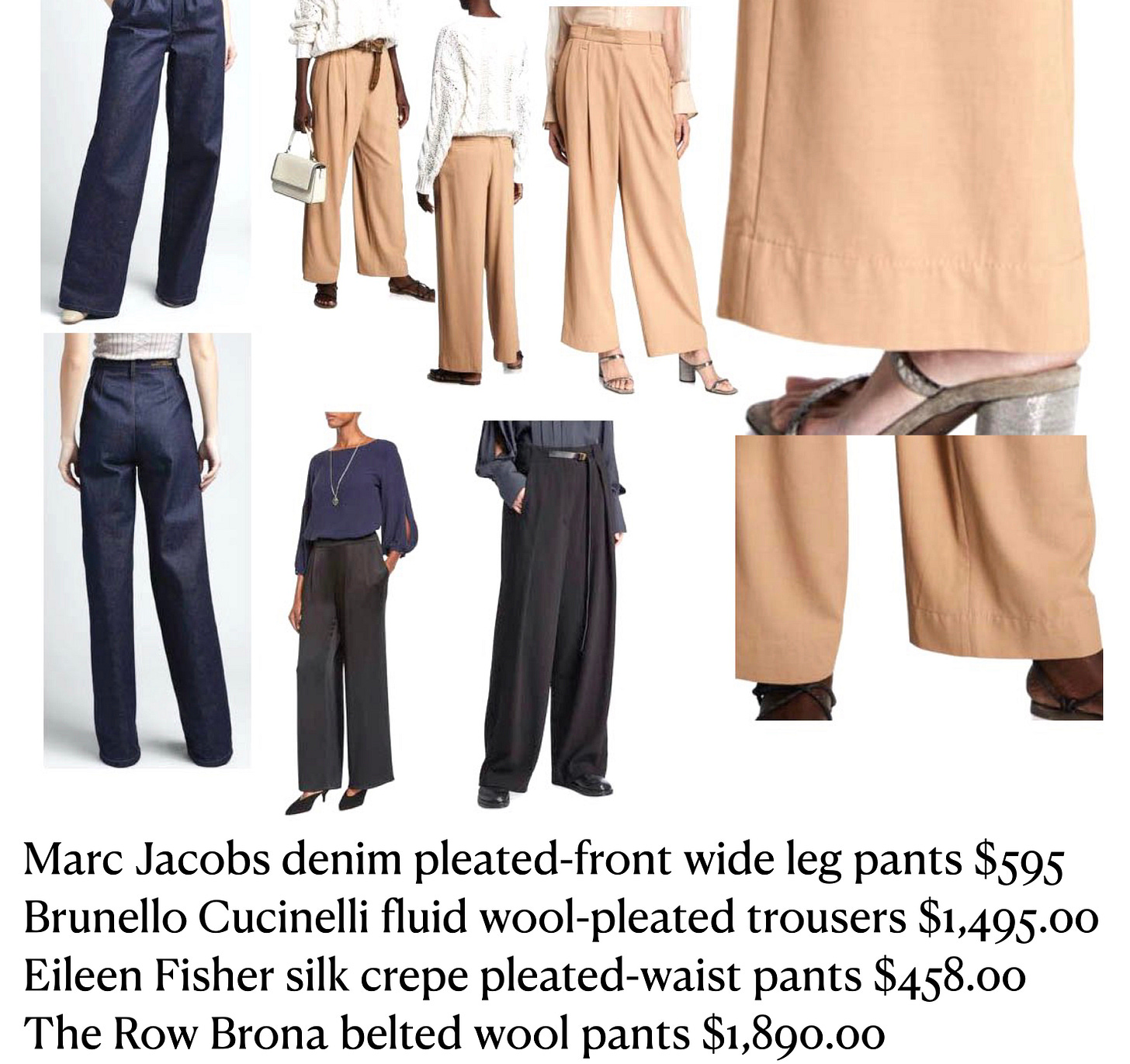Hey Ruth, tell me how to fix this:
“My trousers are pulling when I walk”
“I have too much fabric underneath my bottom”
“You can see stress lines in the photo where my stomach is pushing the fabric”
These statements all describe symptoms. My response would be to first ask questions. I would want to know what pattern you have selected, your key measurement and any changes that were already made to the pattern.
A description of the symptom is a starting point. We need more information before deciding on a remedy. It’s like saying “I have a fever” to a doctor who doesn’t know anything about your medical history and expecting an accurate diagnosis. Perhaps the doctor would respond “Oh that means you have gangrene in your finger, I recommend amputation”. Hopefully you would ask for a second opinion before scheduling surgery. But the doctor is an expert, surely the doctor must be correct? Maybe, but gangrene is only one of many possibilities. Saying the doctor could be correct is not the same thing as saying the doctor is wrong. Call me cautious but I think we need a bit more certainty before proceeding to amputation.
You would not expect any doctor to make a treatment plan without knowing the patient history.
Now the doctor could say “Most patients who come into the clinic with a fever have COVID so I’m guessing you probably have COVID and we will start you on an anti-viral medication right away”. That would be preferable but still not exactly cool. “Most probable” is still problematic. You want more than guesswork. You want the diagnosis to be accurate. The doctor should want both patient history and the results of diagnostic tests.
In the DIY sewing world, people are accustomed to answers like “if you see wrinkle x, here are a couple of things you can try and I hope one of them works for you”. There are so many versions of this. “If your hips are bigger than your waist and your pants slide down then remove the half the amount you pinched out at the thigh”. Sometimes it teeters on the absurd “If you still see diagonal wrinkles on your backside then wait for a full moon and slash the pattern in 3 positions then open it up again a little at a time. Place special tissue (available for purchase) under the opening and nobody will ever know you have a pooch”. OK, I sort of made up the part about the full moon. But you get the point.
Admittedly we’re talking clothes not personal health but still, why do we so readily accept guesswork in fitting? Perhaps because the stakes are lower? Perhaps because our experience of clothing is so dire that “probably” is acceptable? Perhaps because society has little respect for the more marginalized people who are making clothes? Try charging for hem alterations at the standard rate a plumber would expect. And, we have internalized this lack of respect for the skill although we should know better.
The quote below is from an anonymous sewing forum post that illustrates a common sentiment when people start making clothes for themselves:
After many mock ups, interspersed with long breaks to dispel supreme frustration, hours upon hours of reading and watching YouTube over several years, I still haven’t made anything that I would wear outside the house. . . . . . .
Some people enjoy macgyvvering and futzing around with the “fitting puzzle”. But I find this guessing game stressful because if it doesn’t work, that’s my weekend gone and I gotta put it aside for at least a week1. My needs are clothes I can reliably wear out of the house. I have lots of stuff I want to spend time on in addition to sewing2.
TDCO is different
TDCO is a tool to build your fit before you end up puzzling over wrinkles in a completed garment. TDCO does not provide formulas or wrinkle charts. It provides a framework and guidelines. After that it asks that you take responsibility for making the pants to fit you. If you are making pants first time, you will need patience no question, and that is why I am pacing this MPWM to give everybody plenty of time. I have to admit second-guessing myself about the pacing but I have been working extensively with people who are new to making pants and new to sewing in general. This pace respects both the amount of knowledge needed and the process of acquiring that knowledge. Like riding a bicycle, using this tool will be a skill you have forever.
What you can expect
In this MPWM you may not achieve a “perfect” fit3 especially if it is your first time learning this approach. But you can expect pants you will be able to wear out of the house. AND that your pants will be just as good, if not better, as these high-end examples:

IMO, the #OLOlivePants are well designed functional trousers. Once you have custom fit the pattern, you would be just dandy making these in different fabrications and never needing another trouser pattern again. I expect many wears from the ones I will make and that they will give me years of wear. With the effort I am putting in to make these, I’m in it for the long term #SlowFashion.
But as well as having #OLOlivePants, and maybe just as important, you will be able to accurately diagnose your fit. If it is not right, you will know the reason why.
If you are like me, you will be curious about other designs. Fitting skills allow you to try out new clothes and silhouettes. In a story I will share in more detail at some point, a nationally known fitting expert told me “selvedge jeans are not supposed to be worn by fat people”. I was shocked. It was sort of a tipping point for me. I knew this statement was factually incorrect and also why fashion industry training might lead someone into thinking such a statement. I realized that I, an amateur, understood more about pants fitting than the professionals. I could be confident because I could describe how flat patterns create design. The principles used to wrap fabric around bodies and create design are universal. Perhaps this understanding comes more readily being trained as a biologist. The individual details of shape may differ but mechanisms used by living organisms to create that shape are universal.
There is no need for guesswork and I hope to convince you all of that as we move forward. You’ll be accurately diagnosing the symptoms together with the body, design and fabric framework.
And the week becomes a couple of weeks….
Laundry?
I’ll be coming back to the concept of perfect fit






It has been pointed out to me by an astute observer that this post does not make a distinction between a "sign" and a "symptom". I don't think it changes the gist of the post, but definitely something to bear in mind. Here is the definition:
Sign: An objective finding that can be observed by a healthcare professional, such as a rash, fever, or elevated blood pressure.
Symptom: A subjective experience reported by the patient, such as pain, headache, or nausea.